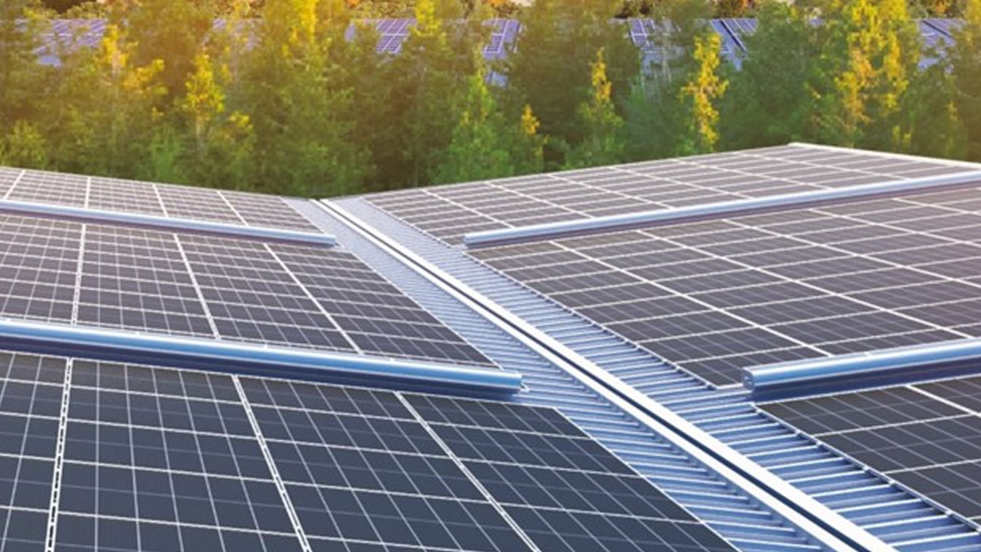工商業(yè)光伏項(xiàng)目 “尋寶” 指南:如何鎖定優(yōu)質(zhì)項(xiàng)目?
在綠色能源轉(zhuǎn)型浪潮下,工商業(yè)光伏發(fā)電成為企業(yè)降本增效與踐行可持續(xù)發(fā)展的重要選擇。然而,并非所有項(xiàng)目都能帶來理想收益,從資源評估到技術(shù)選型,從成本測算到風(fēng)險(xiǎn)預(yù)判,每一個(gè)環(huán)節(jié)都關(guān)乎項(xiàng)目成敗。要選定優(yōu)質(zhì)工商業(yè)光伏項(xiàng)目,需遵循一套嚴(yán)謹(jǐn)且全面的評估邏輯。
Under the wave of green energy transformation, industrial and commercial photovoltaic power generation has become an important choice for enterprises to reduce costs, increase efficiency, and practice sustainable development. However, not all projects can bring ideal benefits, from resource assessment to technology selection, from cost estimation to risk prediction, every link is related to the success or failure of the project. To select high-quality industrial and commercial photovoltaic projects, a rigorous and comprehensive evaluation logic must be followed.
首先,光照資源是項(xiàng)目的 “根基”。項(xiàng)目所在地的年日照時(shí)數(shù)、輻照強(qiáng)度直接決定發(fā)電量。可通過權(quán)威氣象機(jī)構(gòu)發(fā)布的多年平均數(shù)據(jù),對比不同區(qū)域的光照條件,優(yōu)先選擇光照資源豐富、穩(wěn)定的地區(qū)。例如,同一省份內(nèi),山區(qū)與平原、高海拔與低海拔地區(qū)的光照差異顯著,應(yīng)重點(diǎn)關(guān)注年日照時(shí)數(shù)超 2000 小時(shí)、輻照強(qiáng)度高的區(qū)域。同時(shí),還需考慮當(dāng)?shù)貧夂蛱卣鳎缍嚓幱辍⑸硥m的地區(qū),可能增加組件清洗成本與故障率,需謹(jǐn)慎評估。
Firstly, lighting resources are the foundation of the project. The annual sunshine hours and radiation intensity of the project location directly determine the power generation. By comparing the annual average data released by authoritative meteorological agencies with the lighting conditions in different regions, priority can be given to selecting areas with abundant and stable lighting resources. For example, within the same province, there are significant differences in light intensity between mountainous and plain areas, as well as between high-altitude and low altitude areas. Therefore, special attention should be paid to areas with annual sunshine hours exceeding 2000 hours and high radiation intensity. At the same time, local climate characteristics should also be considered, such as areas with frequent rainy and dusty weather, which may increase component cleaning costs and failure rates, and should be carefully evaluated.
其次,用電需求與消納能力是項(xiàng)目收益的 “保障”。優(yōu)質(zhì)項(xiàng)目需匹配穩(wěn)定且量大的用電負(fù)荷。對于工商業(yè)場所,應(yīng)詳細(xì)分析企業(yè)的用電結(jié)構(gòu)與歷史數(shù)據(jù),優(yōu)先選擇年用電量高、用電時(shí)段與光伏發(fā)電時(shí)段匹配度高的企業(yè)。如電子制造、數(shù)據(jù)中心等 24 小時(shí)連續(xù)生產(chǎn)的企業(yè),其穩(wěn)定的用電需求能充分消納光伏電力;而季節(jié)性生產(chǎn)或間歇性用電的企業(yè),可能導(dǎo)致電力無法及時(shí)消納,影響收益。此外,還需了解當(dāng)?shù)仉娋W(wǎng)接入條件,包括可接入容量、接入距離、上網(wǎng)電價(jià)政策等,確保電力能順利并入電網(wǎng)或在企業(yè)內(nèi)部消納。
Secondly, electricity demand and consumption capacity are the "guarantees" for project revenue. High quality projects need to be matched with stable and large electrical loads. For industrial and commercial venues, a detailed analysis of the electricity consumption structure and historical data of the enterprise should be conducted, and priority should be given to selecting enterprises with high annual electricity consumption and high matching between electricity consumption periods and photovoltaic power generation periods. Enterprises that produce continuously 24 hours a day, such as electronic manufacturing and data centers, have stable electricity demand that can fully absorb photovoltaic power; Seasonal production or intermittent electricity consumption by enterprises may result in the inability to consume electricity in a timely manner, affecting revenue. In addition, it is necessary to understand the local grid access conditions, including accessible capacity, access distance, and grid electricity pricing policies, to ensure that electricity can be smoothly integrated into the grid or consumed within the enterprise.

項(xiàng)目建設(shè)條件關(guān)乎成本與可行性。屋頂或場地資源是關(guān)鍵要素,需評估屋頂面積、承重、朝向、傾角等。優(yōu)質(zhì)屋頂應(yīng)具備足夠面積,且結(jié)構(gòu)堅(jiān)固,能承受光伏組件及支架重量;朝向以正南為佳,傾角與當(dāng)?shù)鼐暥认嘟勺畲蠡邮展庹铡M瑫r(shí),需考慮周邊環(huán)境,如是否存在高大建筑物、樹木遮擋,是否有腐蝕性氣體或粉塵影響組件壽命。建設(shè)成本也是重要考量,包括設(shè)備采購、安裝施工、并網(wǎng)費(fèi)用等,需通過多方比價(jià)與方案優(yōu)化,控制單位千瓦投資成本在合理區(qū)間。
The construction conditions of the project are related to cost and feasibility. Roof or site resources are key elements that require evaluation of roof area, load-bearing capacity, orientation, tilt angle, etc. A high-quality roof should have sufficient surface area and a sturdy structure that can withstand the weight of photovoltaic modules and brackets; It is best to face due south, with an inclination angle similar to the local latitude to maximize the reception of light. At the same time, it is necessary to consider the surrounding environment, such as whether there are tall buildings, trees blocking, and whether there are corrosive gases or dust affecting the lifespan of components. The construction cost is also an important consideration, including equipment procurement, installation and construction, grid connection costs, etc. It is necessary to control the unit kilowatt investment cost within a reasonable range through multi-party comparison and scheme optimization.
技術(shù)方案的選擇直接影響項(xiàng)目效率與壽命。組件選型需綜合考慮轉(zhuǎn)換效率、衰減率、質(zhì)保年限等指標(biāo)。高效單晶硅組件在同等面積下發(fā)電量更高,但成本相對較高;雙面組件可利用地面反射光增加發(fā)電量,適合地面空曠、反射率高的場景。逆變器的選擇同樣關(guān)鍵,需匹配組件功率,具備高轉(zhuǎn)換效率、智能監(jiān)控與故障保護(hù)功能。此外,還需關(guān)注系統(tǒng)的整體設(shè)計(jì),如組件排布、線纜布局、防雷接地等,確保系統(tǒng)安全穩(wěn)定運(yùn)行,降低后期維護(hù)成本。
The selection of technical solutions directly affects project efficiency and lifespan. Component selection should comprehensively consider indicators such as conversion efficiency, attenuation rate, and warranty period. Efficient monocrystalline silicon modules generate more electricity in the same area, but the cost is relatively high; The double-sided component can increase power generation by utilizing the reflected light from the ground, making it suitable for scenes with open ground and high reflectivity. The selection of inverters is equally crucial, requiring matching component power, high conversion efficiency, intelligent monitoring, and fault protection functions. In addition, attention should be paid to the overall design of the system, such as component layout, cable layout, lightning protection grounding, etc., to ensure the safe and stable operation of the system and reduce maintenance costs in the later stage.
風(fēng)險(xiǎn)評估是篩選優(yōu)質(zhì)項(xiàng)目的 “防火墻”。政策風(fēng)險(xiǎn)方面,需密切關(guān)注國家及地方的光伏補(bǔ)貼政策、電價(jià)政策變化,以及環(huán)保、土地等相關(guān)政策要求,避免因政策調(diào)整導(dǎo)致收益受損。市場風(fēng)險(xiǎn)上,需預(yù)判未來電力市場供需關(guān)系與電價(jià)走勢,以及儲能技術(shù)發(fā)展對光伏行業(yè)的影響。運(yùn)營風(fēng)險(xiǎn)則涉及設(shè)備維護(hù)、故障處理、人員管理等,需選擇具備專業(yè)運(yùn)維能力的團(tuán)隊(duì)或合作伙伴,確保項(xiàng)目長期穩(wěn)定運(yùn)行。
Risk assessment is the 'firewall' for screening high-quality projects. In terms of policy risks, it is necessary to closely monitor changes in national and local photovoltaic subsidy policies, electricity pricing policies, as well as environmental protection, land and other related policy requirements, in order to avoid losses in revenue due to policy adjustments. In terms of market risk, it is necessary to predict the future supply-demand relationship and electricity price trend in the electricity market, as well as the impact of energy storage technology development on the photovoltaic industry. Operational risks involve equipment maintenance, fault handling, personnel management, etc. It is necessary to choose a team or partner with professional operation and maintenance capabilities to ensure the long-term stable operation of the project.
選定優(yōu)質(zhì)工商業(yè)光伏發(fā)電項(xiàng)目是一項(xiàng)系統(tǒng)性工作,需從光照資源、用電需求、建設(shè)條件、技術(shù)方案到風(fēng)險(xiǎn)評估進(jìn)行全方位考量。只有在每個(gè)環(huán)節(jié)都做到嚴(yán)謹(jǐn)細(xì)致,才能在眾多項(xiàng)目中篩選出真正具有投資價(jià)值的標(biāo)的,實(shí)現(xiàn)經(jīng)濟(jì)效益與環(huán)境效益的雙贏。
Selecting high-quality industrial and commercial photovoltaic power generation projects is a systematic task that requires comprehensive consideration of lighting resources, electricity demand, construction conditions, technical solutions, and risk assessment. Only by being rigorous and meticulous in every aspect can we select truly valuable investment targets from numerous projects and achieve a win-win situation of economic and environmental benefits.
本文由工商業(yè)光伏發(fā)電情奉獻(xiàn).更多有關(guān)的知識請點(diǎn)擊:http://www.51dwgw.cn我們將會對您提出的疑問進(jìn)行詳細(xì)的解答,歡迎您登錄網(wǎng)站留言.
This article is a friendly contribution from distributed photovoltaic power generation For more information, please click: http://www.51dwgw.cn We will provide detailed answers to your questions. You are welcome to log in to our website and leave a message
新聞推薦
product recommendation聯(lián)系方式
Contact Information

 TEL:0531-82390078
TEL:0531-82390078 TEL:18805312017
TEL:18805312017 MAI:sdzdny001@163.com
MAI:sdzdny001@163.com 公司地址: 濟(jì)南市歷下區(qū)山大路157號
公司地址: 濟(jì)南市歷下區(qū)山大路157號 天合藍(lán)天·山東種電
天合藍(lán)天·山東種電 備案號:魯ICP備17052940號-2
魯公網(wǎng)安備37010202700164號
備案號:魯ICP備17052940號-2
魯公網(wǎng)安備37010202700164號
 網(wǎng)站地圖|XML|TXT
網(wǎng)站地圖|XML|TXT

掃一掃方便咨詢我們

截屏,微信識別二維碼
微信號:18805312017